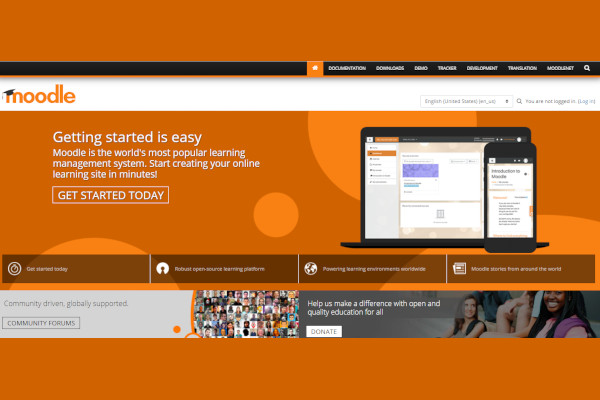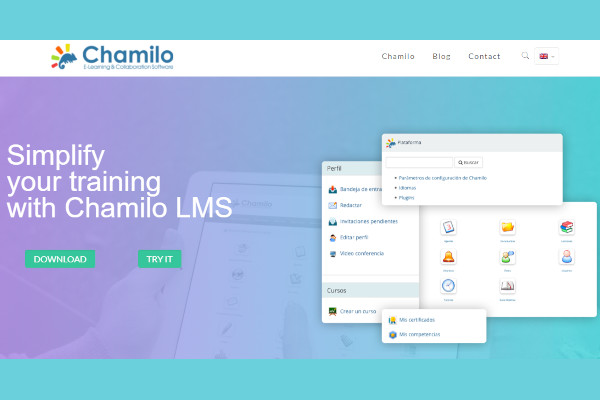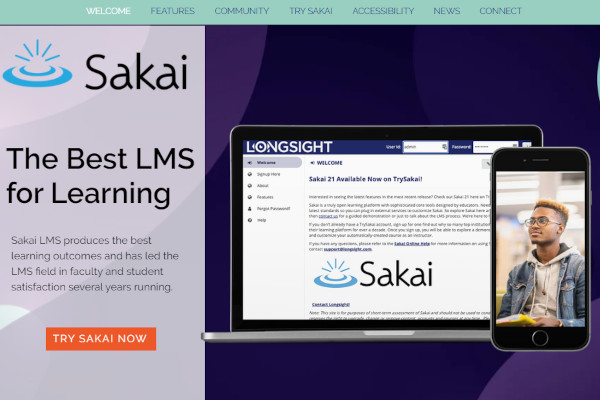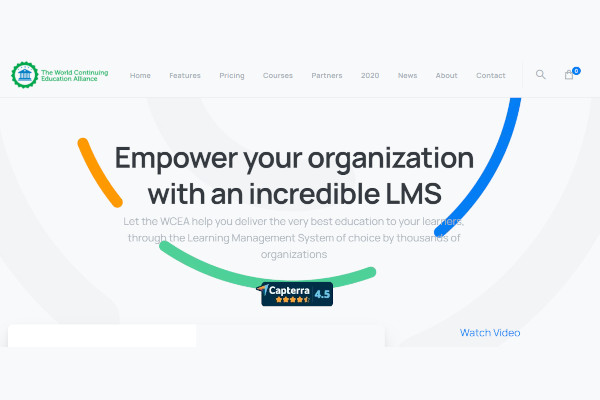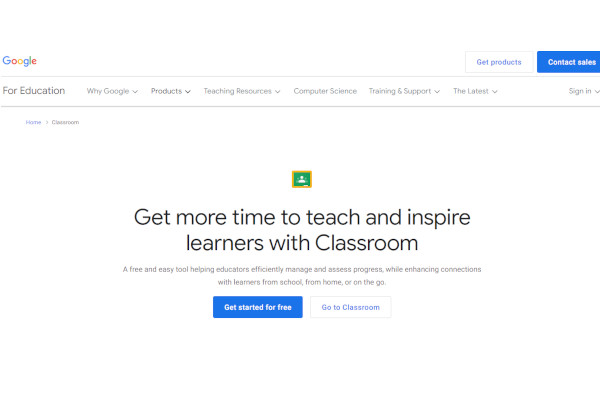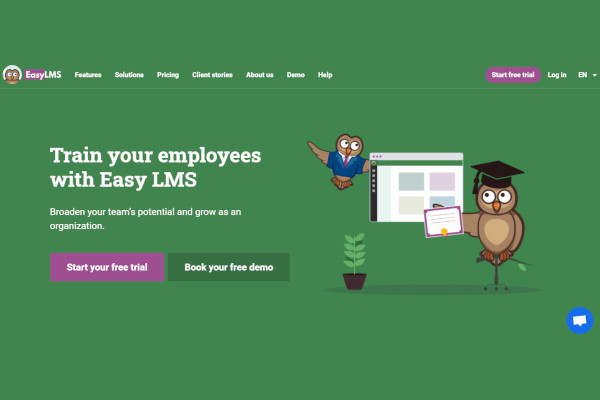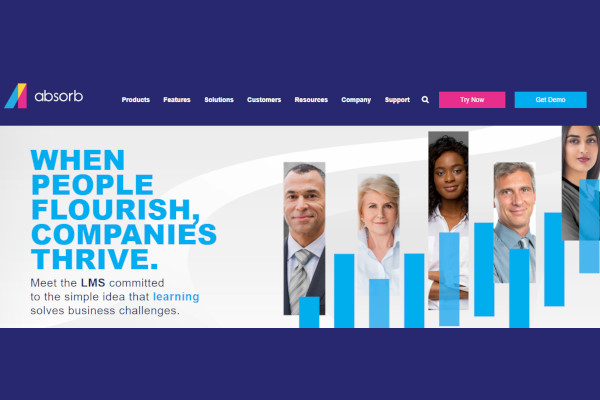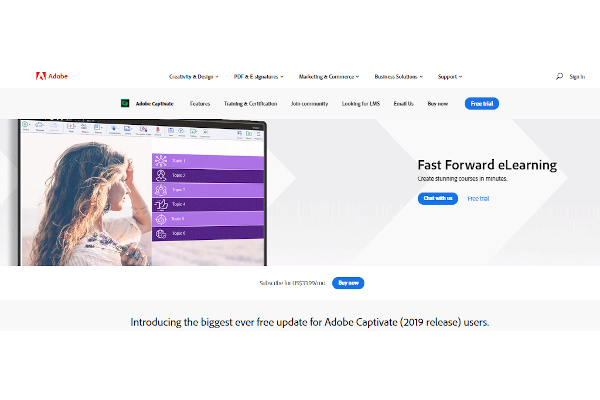Training employees in a virtual setting is not easy. You want to monitor how your employees are doing in their first few weeks on the job and you also want to provide a helpful portal of educational content that they can refer to anytime. Thankfully, learning management system software (LMS) software helps organizations with the tools they need to train their employees even if they are not working in the office.
14+ LMS Software
1. TalentLMS
2. Moodle
3. Chamilo
4. Sakai
5. WCEA
6. SAP Litmos
7. Google Classroom
8. Mindflash
9. Easy LMS
10. Tovuti LMS
11. Absorb LMS
12. CleverGround
13. Adobe Captivate
14. ispring Learn
15. Docebo
What Is LMS Software?
Learning management system software (LMS) is an e-Learning software where the learning processes within an institution take place. Used by schools and businesses, LMS software is used to facilitate educational material within the institution as well as hosting employee training sessions where the appropriate tools are provided to manage the learning system of one’s institution.
Benefits
The biggest benefit of using LMS software is that it builds and increases employee engagement. As workplaces are becoming conducted online, it’s important to engage with employees, both remote and physical, to boost their productivity. It also provides a great online hub where training can take place for employees to be trained about their tasks. The software also helps employers to monitor their employees’ performance through employee monitoring features based on the learnings acquired from the software.
- Builds and increase employee engagement
- Training can take place in one centralized software
- Monitor employees’ performance
Features
The most important feature of LMS software is that it should be easy to use for both employees and employers. Having complicated LMS software discourages users to implement an LMS system in the organization. The software should allow employers to create and management of content for employees for the training of their position through content management.
The software also should be accessible for smartphones so that employees can keep track on the go, which means offline functionality should be implemented in the software if possible so that employees can still read educational material related to their job without an internet connection. The software should also provide administrative tools for employers to track their employees’ performance based on the LMS system. An effective LMS software would allow integration with third-party services such as Google and Microsoft as these services contain useful tools for workflow management.
- Easy to use for everyone in the organization
- Content management
- Accessible in smartphones and offline
- Employee monitoring
- Integration with third-party services
Top 10 LMS Software
1. Ispring Learn
ispring Learn uses the power of its cloud-server to provide a speedy learning management system that can help businesses engage with their employees including online meetings training. $38.6M and 234 employees
2. TalentLMS
TalentLMS guarantees companies success with its learning management system that can greatly help train employees and engage them for a fulfilling working experience with highly customizable tools available that are appropriate for the brand management. The company has 3 employees and earns annual revenue of over $500,000.
3. Moodle
Moodle provides an open-source learning management system that can help educators build their virtual classrooms the way they envisioned that can help engage with students. The company has 134 employees and earns annual revenue of $22.1 million.
4. Chamilo
Chamilo wants knowledge to be accessible to everyone with its learning management system that is easy to use and curate helpful learning modules. The company has 9 employees and earns annual revenue of $1.5 million.
5. Sakai
Sakai provides an award-winning learning management system that can help produce the best and productive results from students. The company has 6 employees and earns annual revenue of over $900,000.
6. Google Classroom
Google Classroom’s biggest advantage is its seamless integration with other Google services that makes remote learning much easier with its virtual meeting tools. Google Classroom’s parent company Alphabet has 207,490 employees and earns annual revenue of $2.1 billion.
7. Easy LMS
Easy LMS lives up to its namesake with an easy learning management system that helps enhance its team’s workflow performance. The company has 12 employees and earns annual revenue of $2 million.
8. Tovuti LMS
Tovuti LMS provides an advanced, robust learning management system software that increases online employee management within the company with various tools such as e-Learning, third-party open-source API integration, push notifications, event booking, etc. The company has 30 employees and earns annual revenue of $5 million,
9. Adobe Captivate
Adobe Captivate helps employees to create an effortless learning management system for employees that helps them learn on the go without extensive programming needed. Adobe has 28,507 employees and earns annual revenue of $2.1 billion.
10. WCEA
WCEA wants to empower organizations with its extensive learning management system that caters to many industries with features such as content development and a revenue generator.
FAQs
What is the difference between LMS software being used in schools vs. in business?
LMS software used for schools has features and options that are optimized for blended learning and virtual classrooms. In this case, LMS software is usually part of a feature in school management software. LMS software in businesses is used to train newly-hired employees.
What is the other productivity-related software that integrates with LMS software?
Digital workplace software operates remote workplaces in a centralized software with features that include task management, project management, workflow management, and employee management. Sometimes, these tools operate as independent software that can co-exist with other productivity software.
How much does LMS software cost?
Prices for LMS software range from free to $1,600 per month or more with customizable pricing available for some software. The software is priced according to its target audience and the features available. Some LMS might have other features usually seen in workflow management and employee management software.
LMS software helps companies train their new employees effectively with curated educational material available for them to access even if they are offline. With other features included, it’s hard to beat the effectiveness of LMS software within the workplace.
Related Posts
10+ Best Chemical Software for Windows, Mac, Android 2022
12+ Best Vulnerability Scanner Software for Windows, Mac, Android 2022
4+ Best Bundled Pay Management Software for Windows, Mac, Android 2022
10+ Best Trust Accounting Software for Windows, Mac, Android 2022
10+ Best Patient Portal Software for Windows, Mac, Android 2022
13+ Best Virtual Reality (VR) Software for Windows, Mac, Android 2022
12+ Best Bed and Breakfast Software for Windows, Mac, Android 2022
15+ Best Resort Management Software for Windows, Mac, Android 2022
14+ Best Hotel Channel Management Software for Windows, Mac, Android 2022
12+ Best Social Media Monitoring Software for Windows, Mac, Android 2022
10+ Best Transport Management Software for Windows, Mac, Android 2022
10+ Best Other Marketing Software for Windows, Mac, Android 2022
10+ Best Top Sales Enablement Software for Windows, Mac, Android 2022
8+ Best Industry Business Intelligence Software for Windows, Mac, Android 2022
10+ Best Insurance Agency Software for Windows, Mac, Android 2022


